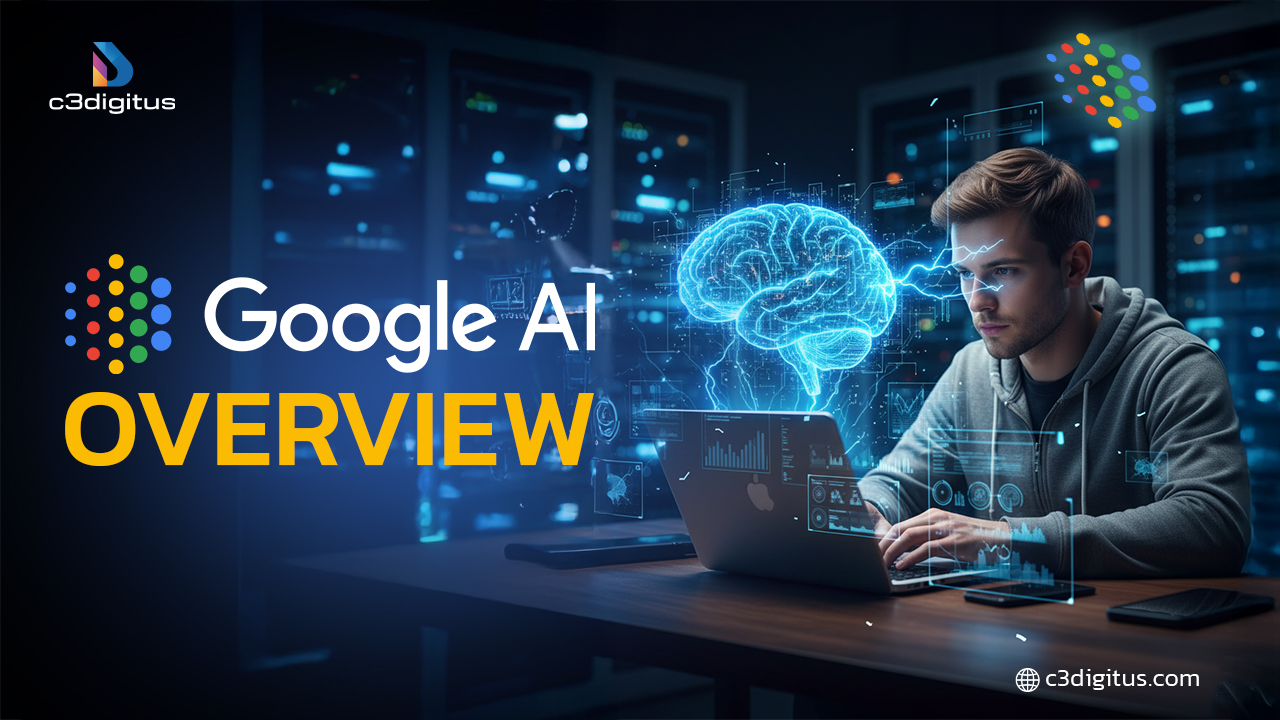Search is evolving faster than ever, and one of the most transformative updates from Google in recent years is the AI Overview. It was launched on May 14th, 2024. If you’ve noticed a box at the top of your search results summarizing answers from multiple sources, you’ve already seen an AI Overview on Google in action.
But what exactly is a Google AI Overview, why does it matter for businesses and content creators, and—most importantly—how can you optimize for it?
This guide answers all those questions and provides a roadmap to mastering AI Overview Search for better visibility, traffic, and brand authority.
The Evolution of Google Search: From Snippets to AI Overviews
To understand the significance of AI Overviews, it helps to look at how Google’s search results have changed:
- Early 2000s – Search results were simple blue links. Users had to click multiple websites to find answers.
- 2014 – Google introduced Featured Snippets, pulling a single answer (definition, list, or table) from a top-ranking page.
- 2017–2020 – Knowledge panels, People Also Ask, and structured snippets expanded.
- 2023–2024 – Google tested the Search Generative Experience (SGE), powered by AI, to deliver summaries.
- 2024 onward – AI Overviews officially launched as the next step, offering multi-source, AI-generated explanations.
Unlike snippets, AI Overviews don’t just take one paragraph from a page. They synthesize insights from multiple authoritative sites into a natural-sounding summary, complete with source links.
This means that ranking #1 organically isn’t always enough anymore—you need to be optimized for AI-powered search as well.
What is Google AI Overview?
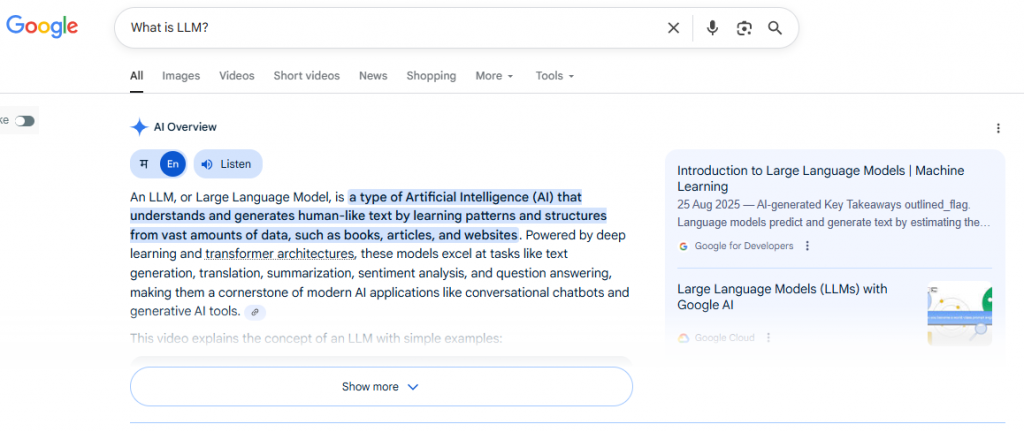
A Google AI Overview is an AI-generated summary that appears at the top of search results when Google’s algorithms determine that users would benefit from a synthesized answer rather than browsing multiple links. In the concept of SEO, nowadays it is also called AIO. And AIO is now available in over 200 countries and territories and in more than 40 languages.
Google reports that users show higher satisfaction with search results featuring AI Overviews. These users tend to ask longer, more complex questions and are more likely to remain on the pages they visit.
For example, if you search “How does solar energy work?”, instead of showing just one snippet, Google may generate a comprehensive explanation—combining definitions, mechanisms, pros and cons, and links to deeper resources.
Key characteristics of AI Overviews:
- Powered by Google’s Gemini AI models.
- Triggered mostly for informational or complex queries.
- Pulls insights from multiple credible sources.
- Includes links for further reading.
- Designed to provide fast, accurate, and contextual answers.
How Do AI Overviews Work?
Google hasn’t disclosed the exact algorithm, but based on studies and experiments, here’s how AI Overview Search operates:
- Query Detection – Google analyzes whether the user’s query is informational, multi-step, or ambiguous.
- Content Selection – AI scans top-ranking pages (usually in the top 10) for relevance, credibility, and structured content.
- Synthesis – Gemini AI generates a summary, weaving together multiple perspectives.
- Attribution – Google cites select pages, linking them below the summary.
This is where AI Search Engine Optimization (AI SEO) comes in. If your content is authoritative, structured, and optimized, it has a higher chance of being included in the AI Overview and SEO pipeline.
Why AI Overviews Matter for SEO?
Google’s AI Overviews represent one of the biggest shifts in search since featured snippets. Instead of showing one excerpt from a single site, Google now uses artificial intelligence to synthesize information from multiple sources and present it directly at the top of the results page.
For SEO professionals and marketers, this means that the rules of visibility are changing. While there are concerns about traffic loss, the opportunities in authority and branding are enormous.AI Overviews appear for a significant portion of searches. One study in early 2025 found that they showed for almost 55% of Google searches, with a 115% growth since March 2025. Another report from May 2025 indicated that AI Overviews were showing in over 11% of Google queries, a 22% increase since their debut.
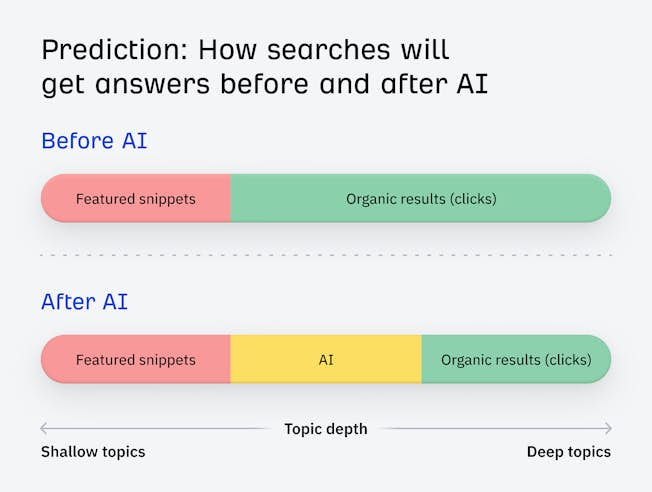
Let’s break down both the benefits and the challenges of AI Overviews for SEO.
Pros of AI Overviews
1. Prominent Placement (Position Zero)
AI Overviews are displayed above organic listings, ads, and snippets. This is the most valuable space on the SERP. If your website is cited, your brand is literally the first thing a searcher sees.
- Why it matters: Users tend to trust the top result more. Even if they don’t click, they’re exposed to your brand name.
- Example: If your health website is cited in an Overview explaining “symptoms of vitamin D deficiency,” your brand gets credibility by association with Google’s AI.
2. Authority Boost
Being cited in an AI Overview is like a vote of confidence from Google’s AI. It tells users: “This website is a trusted source of information.”
- Why it matters: Authority builds trust, which is critical in industries like healthcare, finance, or technology.
- Example: A law firm cited in an Overview about “malpractice claims” instantly gains credibility with searchers—even if the user doesn’t click through.
3. Traffic Potential
Although some searches may end without a click, many users still click through to learn more. Overviews include links to cited websites, and those clicks are often from users with strong intent.
- Why it matters: High-quality, engaged visitors are more valuable than sheer volume.
- Example: An e-commerce site cited in an AI Overview about “best sustainable sneakers” might see fewer clicks overall, but the clicks it does get are likely from people ready to purchase.
4. Future-Proof SEO
AI Overviews signal where Google search is heading. As AI-driven search becomes the norm, optimizing for it ensures your SEO strategy stays relevant.
- Why it matters: Businesses that adapt early build a long-term competitive advantage.
- Example: Websites that optimized for featured snippets years ago gained consistent traffic boosts. The same will be true for AI Overview pioneers.
Cons of AI Overviews
1. Zero-Click Searches
One of the biggest concerns is that users may find their answer directly in the Overview without needing to visit your site.
- Why it matters: This can reduce overall organic traffic, especially for simple, fact-based queries.
- Example: If someone searches “what is the capital of France,” they won’t click—they’ll see the answer instantly.
Get more information: What are Zero-Click Searches?
2. Evolving Algorithms
AI technology is still developing. What works today to get cited in Overviews may not work tomorrow as Google updates its models and ranking signals.
- Why it matters: SEO strategies must remain flexible and proactive.
- Example: Google could change how it weighs freshness, schema, or EEAT signals, which could shift which sites get featured.
How AI Overviews Affect SEO?
AI Overviews are significantly changing the landscape of search engine optimization (SEO) by fundamentally altering the search engine results page (SERP) and user behavior. Around 7 out of 10 searchers only read the first few lines of an AI Overview, and while 88% expand truncated summaries by clicking ‘show more,’ most don’t read the entire text. Trust is also mixed, with 70% of consumers saying they only somewhat trust generative AI search results.
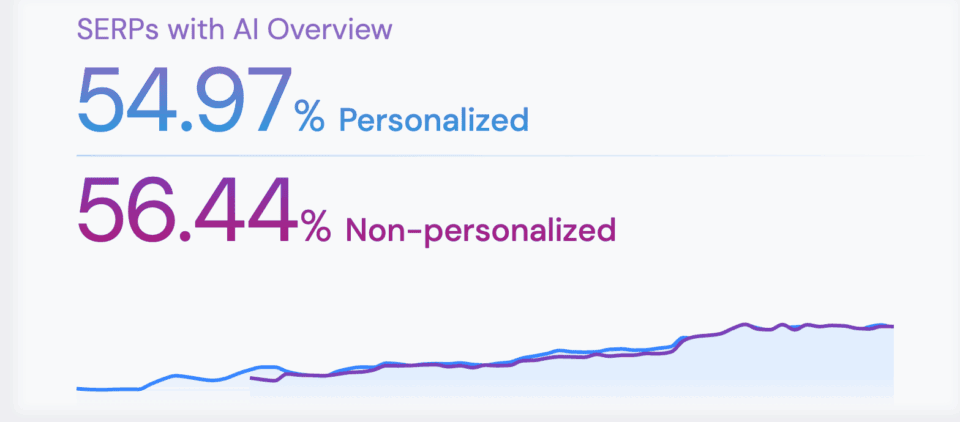
The most immediate effect is a decline in organic traffic. AI Overviews often provide concise, AI-generated summaries at the top of search results, answering user queries without requiring a click-through—a ‘zero-click’ phenomenon. Studies show this has reduced overall clicks by nearly 35%, cut CTRs for top-ranking sites by about 7%, and caused traffic declines of 20–40% for some websites.
However, the impact isn’t entirely negative. While overall clicks may decrease, the traffic that does come through AI Overviews is often higher quality, as users clicking embedded links are typically seeking more detailed information beyond the summary.
This shift underscores the importance of a new SEO goal: getting your content cited as a source within AI Overviews. To achieve this, a growing practice known as Generative Engine Optimization (GEO) is emerging. It emphasizes creating authoritative, trustworthy, and well-structured content that AI models can easily interpret. This means prioritizing clear headings, bullet points, and concise answers to user questions.
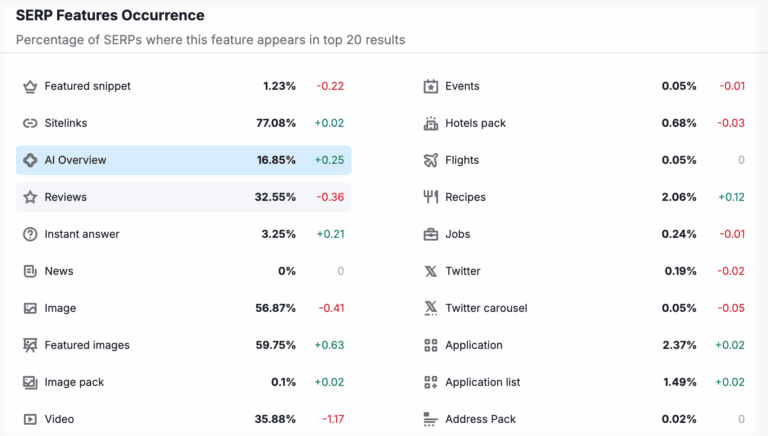
The focus on Experience, Expertise, Authoritativeness, and Trustworthiness (E-E-A-T) is now more critical than ever, as AI Overviews favor content from credible sources. As a result, SEO strategies must evolve—moving beyond the pursuit of #1 organic rankings to building a strong, trusted online presence recognized by Google’s AI systems.
How to Optimize for Google AI Overviews?
Google’s AI Overviews are changing the way search results appear and the way users consume information. Instead of seeing a single featured snippet or clicking through multiple links, users are now presented with AI-generated summaries that pull from several credible sources.
For marketers, SEO specialists, and content creators, this shift introduces a new challenge: how do you ensure your website is one of the sources that Google’s AI trusts and cites in these Overviews?
This guide explores exactly that. By the end, you’ll have a roadmap to position your content so it’s eligible for AI Overview inclusion, giving your brand more visibility in a rapidly evolving search landscape.
1. Target Long-Tail and Informational Keywords
In a recent analysis, nearly 100% of keywords that trigger an AI Overview have an informational intent, while they only have a 10% chance of showing for commercial or transactional keywords.
AI Overviews are most common for informational queries, questions that require context, explanation, or multi-step reasoning. These queries are often long-tail keywords, not single-word searches.
For example:
- ❌ “SEO” (too broad, unlikely to trigger an Overview)
- ✅ “How to optimize SEO strategy for small businesses in 2025” (specific, informational, Overview-friendly)
How to Apply This:
- Use keyword research tools to find conversational and question-based queries.
- Pay attention to Google’s People Also Ask section to discover natural language phrasing.
- Create content that directly addresses these questions in dedicated blog posts.
- Naturally include terms like “AI Overview,” “AI Overview Search,” and “AI Overview on Google.”
👉 Pro tip: Add an FAQ section at the end of your posts. Each question increases your chances of being pulled into an Overview.
Read for more: SEO Keyword: A Complete Guide
2. Provide Comprehensive, Well-Structured Content
Google’s AI favors content that is organized, detailed, and easy to interpret. If your content is one long block of text, it’s less likely to be included.
Instead, think of your page as a resource designed for both humans and AI: clear, scannable, and structured.
Best Practices:
- Use H2 and H3 subheadings to break content into sections.
- Incorporate bullet points and numbered lists for easy scanning.
- Add comparison tables, charts, or graphs where possible.
- Start with definitions and explanations before diving into complex details.
Example: For a blog on “AI in marketing,” structure it like this:
- What AI in marketing means
- Benefits for businesses
- Popular tools in use
- Case studies
- Future trends
👉 Pro tip: Think in “layers of depth.” Start simple, then expand into details. This mirrors how AI writes summaries.
3. Optimize for EEAT (Expertise, Experience, Authoritativeness, Trustworthiness)
Google wants AI Overviews to pull from credible, trustworthy content. That means your website needs to send strong EEAT signals.
How to Build EEAT:
- Expert authorship: Use real bylines with credentials (e.g., “Jane Doe, SEO Specialist”).
- Author bios: Highlight relevant experience, certifications, or industry roles.
- Cite reliable sources: Link to official studies, government publications, or well-established reports.
- Keep content updated: Outdated information weakens trust signals.
- Show real-world experience: Case studies, experiments, and examples demonstrate first-hand expertise.
👉 Pro tip: If your industry allows, showcase customer success stories or test results. First-hand data carries more weight than generic commentary.
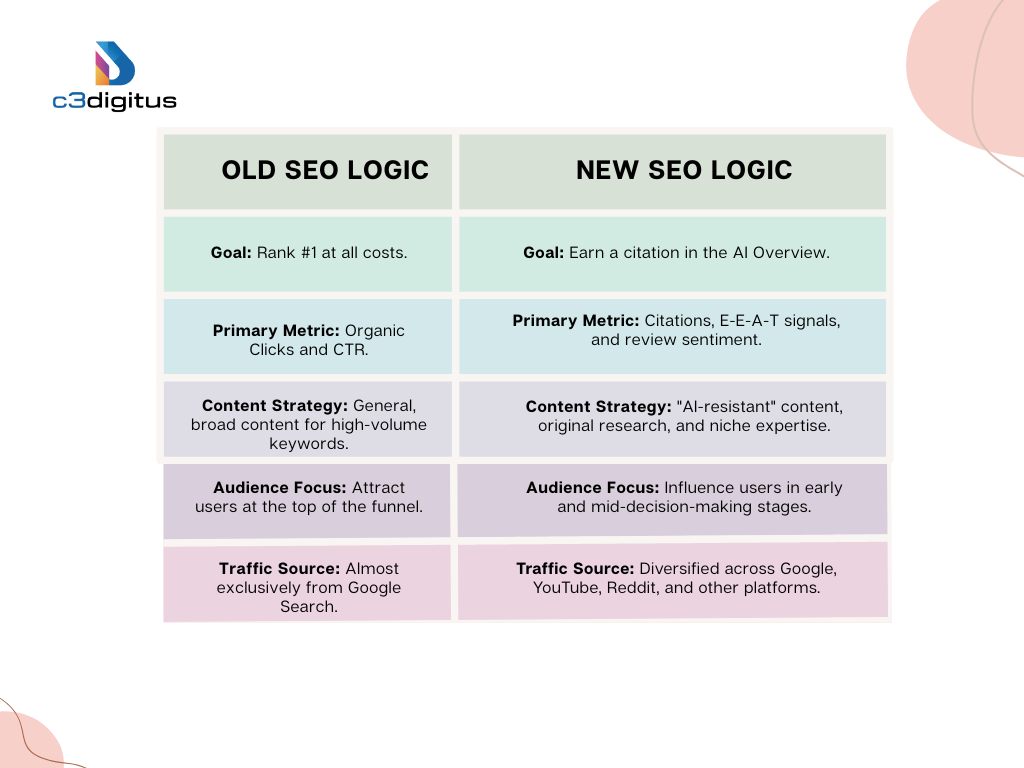
4. Implement Structured Data & Schema Markup
AI Overviews need clarity. Schema markup provides that by labeling content so it’s easier for machines to understand.
Key Schema Types to Use:
- FAQ schema: Mark up common Q&A within your article.
- HowTo schema: Perfect for step-by-step guides.
- Article schema: Ensures author, publisher, and date details are machine-readable.
Example:
If you publish “How to Install Solar Panels,” using HowTo schema means Google can easily pull those steps into an Overview.
👉 Pro tip: Use Google’s Rich Results Test to validate schema before publishing.
5. Prioritize Content Freshness
Google’s AI favors recent and relevant information. Outdated blogs, even if once authoritative, are less likely to appear in Overviews.
How to Stay Fresh:
- Update high-performing articles every 3–6 months.
- Add the current year into your titles when relevant (“AI SEO Strategies in 2025”).
- Replace old stats with the latest available data.
- Refresh images, screenshots, and references.
👉 Pro tip: Even small updates (changing a statistic or example) can reset freshness signals.
6. Strengthen Internal Linking & Topic Clusters
AI Overviews tend to favor websites that demonstrate topical authority. One blog post isn’t enough—you need interconnected content.
How to Build Topic Clusters:
- Create a pillar page: e.g., “What is Google AI Overview?”
- Build cluster blogs: e.g., “AI Overview vs Featured Snippets,” “Schema for AI Overviews,” “AI Overview SEO Case Studies.”
- Interlink clusters back to the pillar page using keyword-rich anchor text.
👉 Pro tip: Internal linking isn’t just for SEO—it shows Google your site covers the subject comprehensively.
7. Improve Technical SEO
Strong technical SEO ensures that your content is discoverable and usable by Google’s AI systems. Even great content can be overlooked if your site performs poorly.
Technical Essentials:
- Optimize for Core Web Vitals (fast loading, stability, responsiveness).
- Ensure mobile-first design (most AI Overview queries come from mobile devices).
- Use HTTPS for security.
- Eliminate crawl errors and maintain a clean site architecture.
👉 Pro tip: Run regular audits with tools like Google Search Console or PageSpeed Insights.
8. Monitor and Analyze AI Overview Performance
Currently, Google doesn’t offer a dedicated report for AI Overviews in Search Console. However, you can still track your performance manually and with third-party tools.
How to Track:
- Identify keywords that frequently trigger Overviews in your niche.
- Manually check if your site appears as a cited source.
- Use SEO tools that experiment with tracking AI Overview visibility.
- Watch traffic shifts before and after major AI-related updates.
👉 Pro tip: Keep a content update log. This lets you connect optimization changes to increases (or drops) in Overview visibility.
In conclusion, Google AI Overviews are reshaping how users interact with search and how businesses approach SEO. While they bring challenges like reduced clicks and zero-click searches, they also create powerful opportunities to build brand authority, earn high-quality traffic, and future-proof your content strategy. By focusing on GEO practices, strengthening EEAT signals, and keeping your content fresh, you can position your website as a trusted source in this new search landscape. The key isn’t just ranking—it’s being recognized and cited by Google’s AI.


